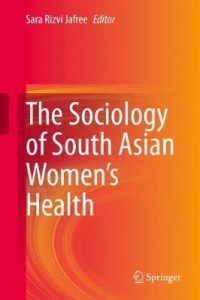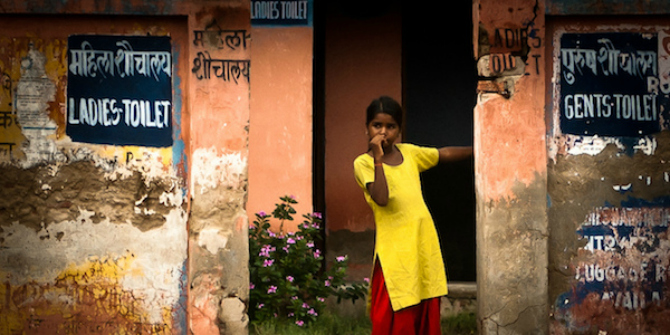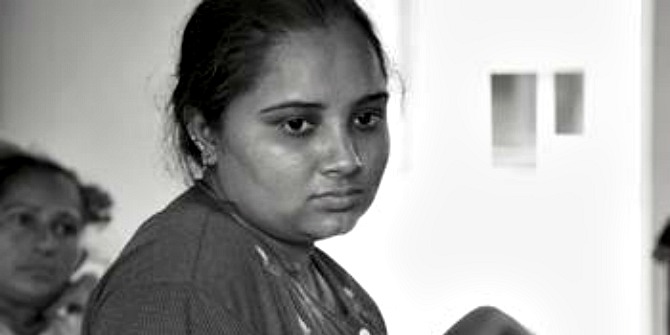In The Sociology of South Asian Women’s Health, Sara Rizvi Jafree brings together contributors to explore gender inequity in health access in South Asia and the inadequacy of cultural and regulatory forces supporting South Asian women’s health and wellbeing. This timely and accessible volume will be a valuable resource for students and researchers working across a range of areas, including sociology, health studies and development, as well as community health workers and social protection officers, writes Parveen Ali.
The Sociology of South Asian Women’s Health. Sara Rizvi Jafree (ed.). Springer. 2020.
 Find this book (affiliate link):
Find this book (affiliate link): ![]()
There has been a welcome shift away from the narrow focus on women’s health research from North America and Europe, towards a growing interest in both the health and sociological experiences of women from developing countries. Women’s and Gender Studies are moving away from the highly theoretical concerns of a few years ago to more concrete and meaningful efforts to understand the realities of women’s lives.
The Sociology of South Asian Women’s Health is a very timely volume. The concerns this book raises are relevant. Progress has been made regarding gender inequity, women’s participation in society and politics, for example, in many parts of the world. But South Asia has made less progress. This book addresses salient topics related to gender inequity in health access and the inadequacy of both cultural and regulatory forces supporting South Asian women’s health and wellbeing. The contributing authors present their arguments using a factual approach and marshal their points carefully and logically. I cannot imagine this book losing its relevance any time soon.
The editor, Sara Rizvi Jafree, has assembled an impressive team of contributing authors. The fact that she has co-authored each chapter has helped the volume to have a coherence that some edited collections lack. The authors’ understanding of South Asian women’s health is strongly based on both theory and previous research, with the collection drawing on broadly accepted understandings in both Women’s and Gender Studies and in Health Policy, Sociology of Health and related disciplines. Each chapter uses quantitative or qualitative evidence to present problems and limitations and ends with appropriate recommendations for development.
What is novel about this volume is that it collapses the experiences of South Asian women. Although these women belong to different backgrounds and communities, it is time to recognise that they have cultural and historical commonalities which should be explored. There is a definite appeal in the joint recommendations for South Asian healthcare and social policy reform outlined in this book. Surprisingly, the volume does not project unremitting pessimism. Instead, it supports positive initiatives for improved health outcomes for women, emphasising what outcomes and interventions have worked and what can be further developed or benchmarked and replicated in other settings in the region. Of particular merit are the recommendations for improved regulation of the health sector in South Asia to bolster women’s health in Chapter Nine, authored by Ainul Momina and Jafree. The chapter includes insightful arguments for the utility of co-regulation in a decentralised manner and the building of private and public partnerships with the state at the apex of the triangle.

Image Credit: Crop of ‘A Bangladeshi nurse helps treat a patient suspected of suffering from diphtheria in the Kutupalong Rohingya refugee camp near Cox’s Bazar, Bangladesh, January 2018’ by DFID – UK Department for International Development licensed under CC BY 2.0
The nine substantive chapters are both thorough and well-researched. The authors have made use of primary and secondary data, case studies and narrative material to highlight women’s experiences. The most relevant areas of women’s healthcare experiences, barriers, challenges and oppression that South Asian women face are presented effectively. Specific areas that have been constructively covered across the chapters include mental health; reproductive and maternal health; decision-making rights for health-seeking behaviour; refugee and displaced women’s health; and micro health insurance for impoverished women.
The book also makes clear connections between health and women’s economic situations and, most particularly, the problems they face in extremely patriarchal societies. A model describing a pathway for poverty alleviation and health coverage for women of South Asia in Chapter Five by Fionnuala Gormley and Jafree is especially valuable, as it highlights the cultural barriers and includes sociocultural interventions to target poverty alleviation. Evidence from Bangladesh, Pakistan and India encapsulates social and environmental problems that keep women in cyclical problems related to poverty and health. A case study for the role of microfinance in supporting poverty alleviation and health simultaneously is also included to underscore region-specific solutions.
I found that all the chapters were strong. Chapter One by Jafree successfully brings together significant and diverse sociological theories addressing why South Asians face greater vulnerability to health challenges. As many as 50 theories have been discussed effectively by the authors, making this a valuable chapter for students and researchers alike. Chapter Two, authored by Jafree and Deepti Sastry, provided some powerful foundations for the claims made in the rest of the book. I particularly enjoyed the detailed life stories presented in this chapter. The contexts and life circumstances of the women help to bring into focus the opportunities and limitations offered by family and community. These highlight how individual self-efficacy and health behaviours are sometimes not in the control of women, even when they come from privileged and educated backgrounds. Conversely, the challenges in health-seeking behaviours for women from impoverished backgrounds and with physical disabilities are insurmountable without community support and protective social policy.
Chapter Four, authored by Jafree, Rubeena Zakar and Shaheda Anwar, uses the Demographic Health Survey data from different South Asian countries to provide statistical evidence for demographic and social areas that need reform to improve independent decision-making for women’s health. This chapter provides direct solutions to improve maternal and child health indicators across the expanse of South Asia and is a must read for policymakers and researchers alike. Similarly, Chapter Seven, authored by Masha Asad Khan, Jafree and Tahira Jibeen, provides evidence for the co-existence of mental health and medical problems in women, as perceived by practising women primary health care physicians of South Asia. This again is worthy information to provide impetus to invest in the mental health of South Asian women, a seriously neglected area for many years.
The chapter on refugee and displaced women, Chapter Five, raised issues that are less often covered in books about health. An extremely useful summary table in this chapter lists environmental alterations faced by women due to displacement and climate change and the corresponding health impact. This summary can be used by policymakers in immediate interventional support of the large number of refugee and displaced women in South Asia, estimated to be above 10 million. At the same time, much more research is needed in this area, and perhaps the authors would like to concentrate and specialise in this research gap for future collaborations.
The underpinning assumption of the volume is that women matter, that women’s experiences are valuable and should be recognised and that women are disproportionately affected by inequality, discrimination and oppressions. While we live in an age that seems to be moving to the right, these assumptions are both valid and in need of expression. Having said this, I can well imagine some male students and audiences, especially in the more patriarchal parts of South Asia, reacting with indignation at the findings of this volume. But bringing this well-researched and well-presented material to their attention, and promoting more scholarship like this from South Asia, is needed to help in addressing male biases in the region. This will also play a role in securing the male championship of health policy and protection for women in South Asia.
I strongly recommend this volume as a valuable book. Because of the accessibility of the language, this collection will be valued by graduate and upper-level undergraduates working in this area. In addition, the collection will appeal to researchers in Sociology, Social Policy, different branches of Health Studies, especially Social and Health Policy, Nursing, Epidemiology and Social Work, as well as those working in Development Studies and International Relations, and Women’s and Gender Studies. There is a critical need in South Asia to accelerate the role of Community Health Workers and Social Protection Officers for women’s health and wellbeing, especially at the primary level. This volume will also be a critical resource for such workers and officers as more jobs and avenues are created for them across the region.
Note: This review gives the views of the author, and not the position of the LSE Review of Books blog, or of the London School of Economics and Political Science. The LSE RB blog may receive a small commission if you choose to make a purchase through the above Amazon affiliate link. This is entirely independent of the coverage of the book on LSE Review of Books.







